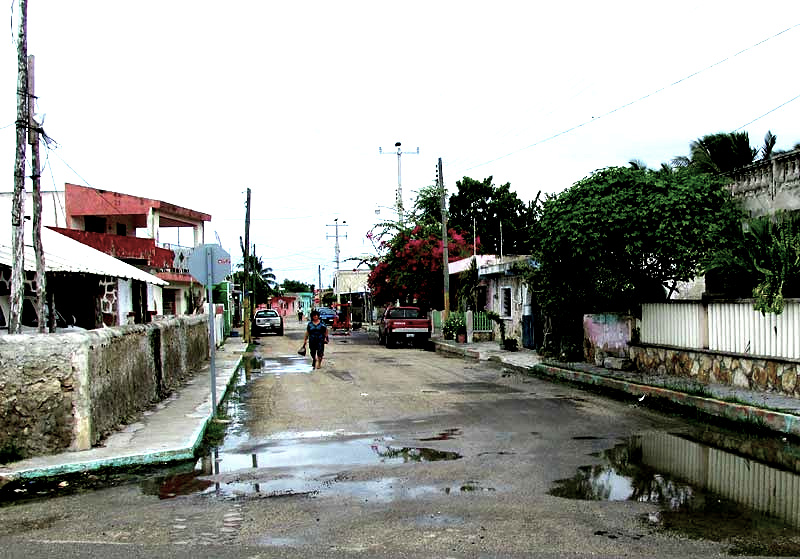
An Excerpt from Jim Conrad's
NATURALIST NEWSLETTER
November 2, 2014
Issued from Río Lagartos, on the northern coast of Yucatán, MÉXICO

At http://www.backyardnature.net/n/14/141019mp.jpg we've seen that Río Lagartos from high up looks like a white pyramid projecting into a lagoon behind a long barrier island separating Río Lagartos and the lagoon from the Gulf of Mexico. That view also shows that the town is fairly well defined with not much "sprawl." Houses and streets go to a certain point where water, mangrove swamps or low scrub forest is encountered and simply stops. The streets are somewhat narrow and fairly well maintained, though the town is so flat and so near sea level that after rain water tends to pool in the streets and drainage in ground-floor bathrooms can be sluggish. A typical street is shown above.
A striking feature of Río Lagartos -- at least to Northerners -- is that people here like bright colors, as you can confirm below:
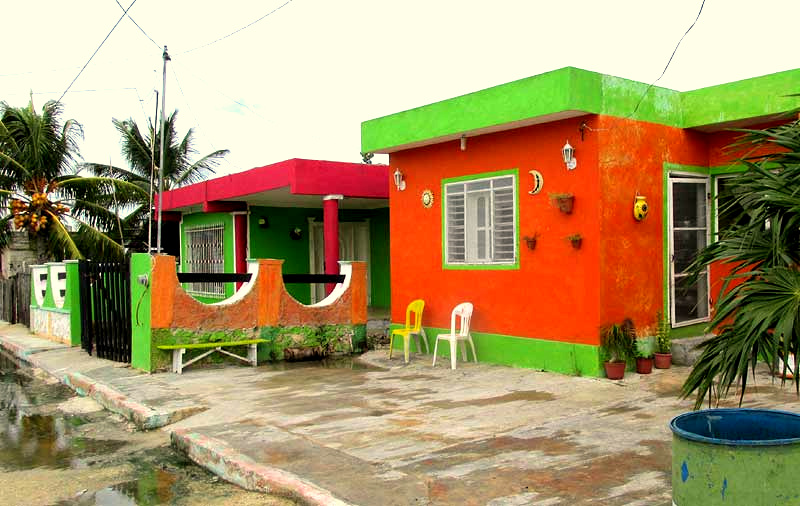
What's missing in these pictures is the noise, for it's mid morning when popping motorbikes are zipping up and down streets, people have their radios on loud, dogs are barking and whining all over town, Great-tailed Grackles are whistling, scraping and screeching in palm trees, and all kinds of folks are going up and down nearby streets hawking fruit, tamales, atole, 20-liter plastic bottles of purified water and other items from pushcarts, motorbikes equipped with carrying platforms, and the backs of pickup trucks, and they let us know their whereabouts with a cacophony of bell ringing, horn tooting, whistling in various formats, and calling through loudspeakers mounted on truck cabs.
The town's streets meets the water abruptly, as seen below:
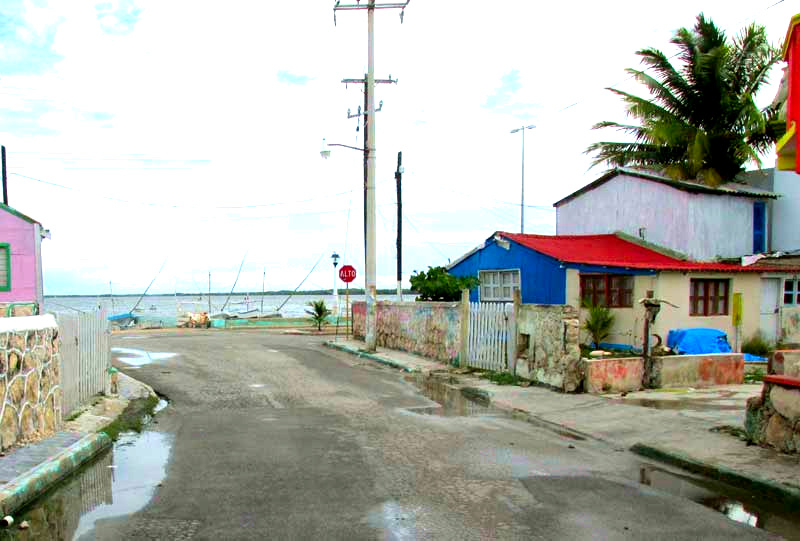
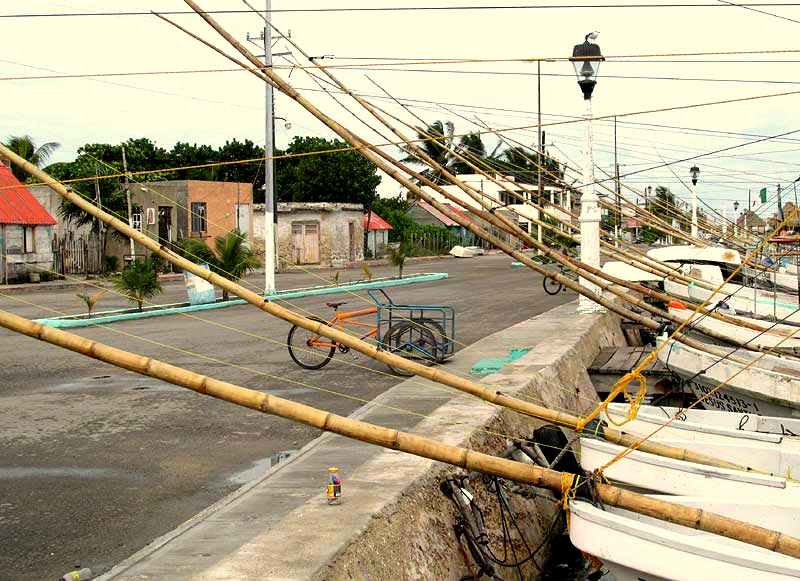
Most of the time from along Río Lagartos's western side you can see across the estuary a diffuse, pink line between the mangroves and water. Those are flamingos. An interesting shot from out in the estuary toward town, through some flamingos, is shown below:
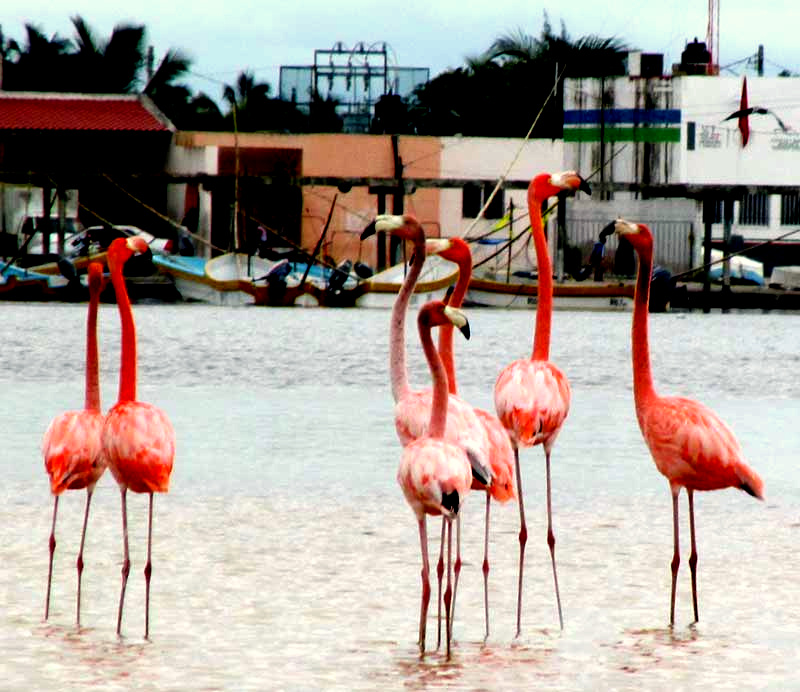
Most people here are just getting along, and when you hear how little money they make you wonder how they survive. Life in Río Lagartos is marked by this inescapable fact: That as the population grows there are more and more fishermen, more and more boats going out each morning, but fewer and fewer fish. A biologist I know says that within maybe four or five years it'll simply be impossible to survive here fishing, and no one knows how that can be dealt with. A few years ago two attempts were made at aquaculture -- growing fish in cages or netted-in areas -- and those attempts were successful. However, in both instances the harvest was stolen, the owners got discouraged, and didn't try again.
The town, then, so colorful and friendly, is a microcosm of what's happening all over the Earth. People everywhere want to do the right things, yet while many realize that their way of living is unsustainable, hardly anyone is willing or able to change their behavior. And so, things keep careening toward... what?
Visitors to Río Lagartos not only get to enjoy the town's charm, color, and the surrounding area's riot of beautiful plants and animals doing fascinating things, but also they can feel good about spending vacation money here. Dollars spent here bounce all over town, and also make it more likely that the surrounding Rio Lagartos Biosphere Reserve will be protected, if not because it's the right thing to do then because it attracts money to where it's needed.
If you'd like to visit, let me know.